The Endangered List
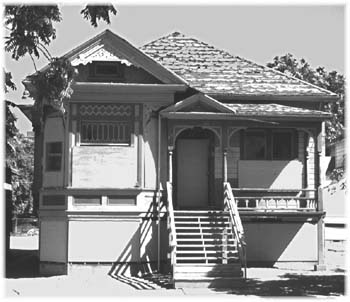
River Street
1880s
River and Saint John streets, San Jose
Think Washington, D.C., San Antonio, Texas, or Portland, Ore. All are situated on rivers and have developed or preserved quaint shopping districts along them that are attractions for tourists and locals. The River Street Historic District could one day have a similar allure. The River Street area was settled during the turn of the century by Italian immigrants. Many stayed at the Torino Hotel, which is now Henry's High Life, a city historic landmark. In the '80s, land speculators Murlin Vellequette and Cliff Wininger began buying up the property in hopes of selling it to a developer willing to build an office tower. In the early '90s, the speculation ended as the Santa Clara Valley Water District began buying parts of River Street to make way for the Guadalupe River Project. Now, André Luthard of the Preservation Action Council envisions a "River Street Gardens" commercial district with stores, restaurants, pubs and bike rentals. Right now, two buildings on St. John Street are designated historic, but the bulk of the St. John Street frontage is owned by Wininger and Vellequette, who pine for a return on their investment. Until there is a commitment from all the landlords and the city, River Street Gardens will remain an ambitious plan and the Italian homes, decaying relics.
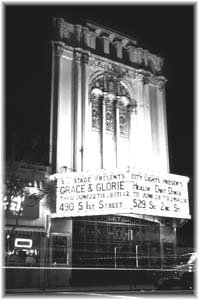
Fox
California
Theater
1927
345 S. First St.,
San Jose
San Jose's first ornate movie palace opened just as the first "all-talkie" films began coming out of Hollywood, and soon after, a new sound system had to be installed to accommodate these movies. Today, the Spanish Baroque theater's future is in flux. It is owned by the Redevelopment Agency, which would like it to become the new home of the San Jose Symphony. But if the symphony moves in, extensive interior modifications will have to be made. The ceiling would be raised 12 feet, the proscenium repositioned, a second balcony added and the stage expanded to handle 120 musicians and vocalists. The Preservation Action Council wants the theater preserved as a multi-use venue with no extensive interior modifications. This would rule out use by the full symphony, which the PAC argues needs a larger space anyway, but would accommodate a variety of other smaller-scale performances and films.
Agnews Hospital
1906
Lafayette St., Santa Clara
Swaying palms, Spanish-style buildings, a grand ballroom and a majestic clock tower mark the campus of the historic state mental hospital, located in the heart of Silicon Valley's golden triangle. Sun Microsystems bought the 290-acre campus from the state for $51 million and plans to demolish most of its 40 buildings. Santa Clara city officials want the hospital to be included on the National Register of Historic Places. The designation would make some of the buildings subject to review before Sun could strike with the wrecking ball.
Steve Jobs' parents' house
1161 Crist Dr., Los Altos
As a student at Homestead High School in Cupertino, Steve Jobs attended after-school lectures at Hewlett-Packard in Palo Alto. Once, he boldly approached the president, William Hewlett, for a part he needed for a school project. Hewlett obliged and hired Jobs for the summer. Jobs met Steve Wozniak, and four years later they got together to build the Apple I computer. In the Jobs family garage, an industry and a culture were born. Yet this piece of history has no protection.
Beats' Menage House
1047 E. Santa Clara St., San Jose
Neal Cassady is listed on one line of the 1952 Crisscross Directory as a "brakeman" for the Southern Pacific Railroad. The little cream stucco house he rented with his wife, Carolyn, sits next to the parking lot of the Chapparral Super. There is a back house where Allen Ginsberg lived and a little yard between the two. Kerouac was a frequent visitor (you do the math). Today, at least two families live in the houses, and laundry hangs in the yard. They were happy to hear of the famous tenants that preceded them, and the houses are full of life but falling into disrepair.
Mark's Hot Dog Stand
1947
1920 Alum Rock Ave., Alum Rock
The orange dome was named a San Jose historic landmark in 1992, characteristic of a period of architecture in the '20s and '30s called "roadside vernacular," when some buildings served as a billboard. Mark's once served fresh juice with those dogs. Now, the city wants a mixed retail and housing development on the site. If "The Orange" survives, it will probably be integrated somehow into the new structure.
Hewlett-Packard garage
367 Addison Ave., Palo Alto
The electronics giant was founded by William Hewlett and David Packard in this one-car garage in 1938. Packard is reported to have been adamant against any sentimental treatment of the building. He was a futurist, after all. And the Packard Foundation specifically states in its criteria that its funding not be used for preservation of the old buildings.
Kesey House
1920s
La Honda
"Can you spare some change so I can experiment with an alternate reality?" If the South First kids only knew. After months on the market, Ken Kesey's cottage sold for an unknown sum. The house, which is inaccessible by car, listed for $239,000. The Realtor promises that the buyers are sympathetic to those hallowed grounds, which include the treetop remnants of shacks built and lived in by '60s counterculture campers.
Ward's Funeral Home
1890s
Devine Street, San Jose
This Italian villa became a funeral home in 1909, but it was a private home before that. Today it serves as legal offices. It stands on the corner of Market and Devine streets, a stately gray structure with strong, white corinthian columns. It was the oldest funeral home in San Jose, and preservationists have vowed to go to the mat for it.
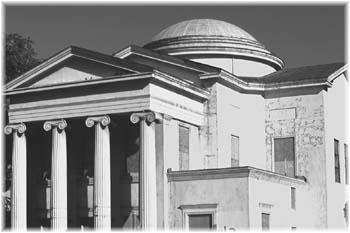
First Church of Christ, Scientist
1905
43 E. Saint James St., San Jose
The last historic structure facing the north side of Saint James Park, the neoclassical church is critical to the continuity of San Jose's historic square. The first victory of the Preservation Action Council in 1989, the church will be preserved in some form by Barry Swenson. It may, however, become the portico to an impending housing development.
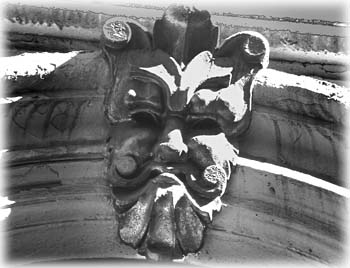
Odd Fellows Building
Hank Coca's Furniture
1883
82 E. Santa Clara St., San Jose
The hall was built for travelers who did not belong to a fraternal organization and, hence, were "odd fellows." Hank Coca says he's restoring it, but to the chagrin of the Redevelopment Agency he won't take that garish sign off the ornate facade. And Coca infuriated preservationists when he just tore out the historic building's grand staircase. Who knows what other crimes against history have been committed inside?
Griffin House
1901
Foothilll College campus, Los Altos
Built by Willard M. Griffin, the brown-shingled house is one of the finest examples of the California shingle style. Griffin's sons Charles and Andrew helped found the Del Monte Corporation. The house is a designated state historical site. The board of trustees of the FoothillDe Anza Community College District doesn't want it but is willing to consider uses for it.
Steinbeck House
1936
Greenwood Lane, Monte Sereno
John Steinbeck wrote The Grapes of Wrath and Of Mice and Men over an 18-month period in this little cottage. It is on the National Register of Historic Places and was judged the most important historical property in Monte Sereno. Somehow, none of this impressed the owner of the house, Joel Gambord. "I bought the house because I like it," he said. "When they said it was John Steinbeck's, I said, 'So what?' " So when Gambord found that the city wouldn't let him make significant renovations to the house, he got elected to the City Council so he could tear down Monte Sereno's preservation law. Four members of the Monte Sereno historic commission resigned in disgust. "It's taking away some freedom from people in the use of their property," Gambord said.
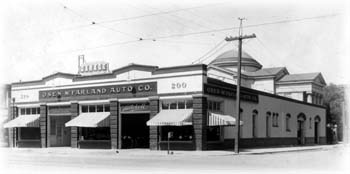
Letcher Garage
1908
200 N. First St., San Jose
Right smack in the middle of the site where Barry Swenson hopes to build a housing development on St. James Park, Letcher Garage is almost certainly a goner. But the story of Clarence H. Letcher is more the stuff of pulp fiction than historic landmarks. Letcher designed and built the Sunset Automobile around the turn of the century until Model Ts began rolling out of Detroit. He saw the future was not in building cars, but in fixing them. He opened Letcher's garage and posted road signs from San Jose to Los Angeles that reminded motorists how many miles to Letcher's. The sign over his garage read "The End of the Road." Later, Letcher became a luxury-car dealer selling Cadillacs, Packards and Pierce-Arrows. But most of San Jose knew that Letcher loved women as much as he loved cars. He had a very public affair with a blonde divorcee and hairdresser, Ann Bennett. Finally, Letcher's second wife, Helen Permian, grew tired of it all and on July 2, 1926, confronted her philandering husband in the doorway to his garage. Letcher's mechanics saw the two argue and then watched in horror as Permian pulled a .38 out of her purse. Letcher tried to wrest the gun away from her but was shot twice in the head. He fell back into the arms of his employees, and Ms. Permian leveled the gun and shot him again, just below the heart. Then, she took off her hat and shot herself in the temple. Letcher lived until he arrived at the hospital. By the time a young reporter for the Mercury News, Theron Fox, arrived on the scene, Permian was dead, and he helped carry her body to an ambulance. Permian's outraged relatives tried to bring criminal procedings against the hairdresser, but in the end Letcher's attorney convinced the family to bury Letcher and Permian side by side in Oak Hill Cemetery.
[ Metro | Metroactive Central | Archives ]
![[Metroactive Features]](/features/gifs/feat468.gif)
![[Metroactive Features]](/features/gifs/feat468.gif)